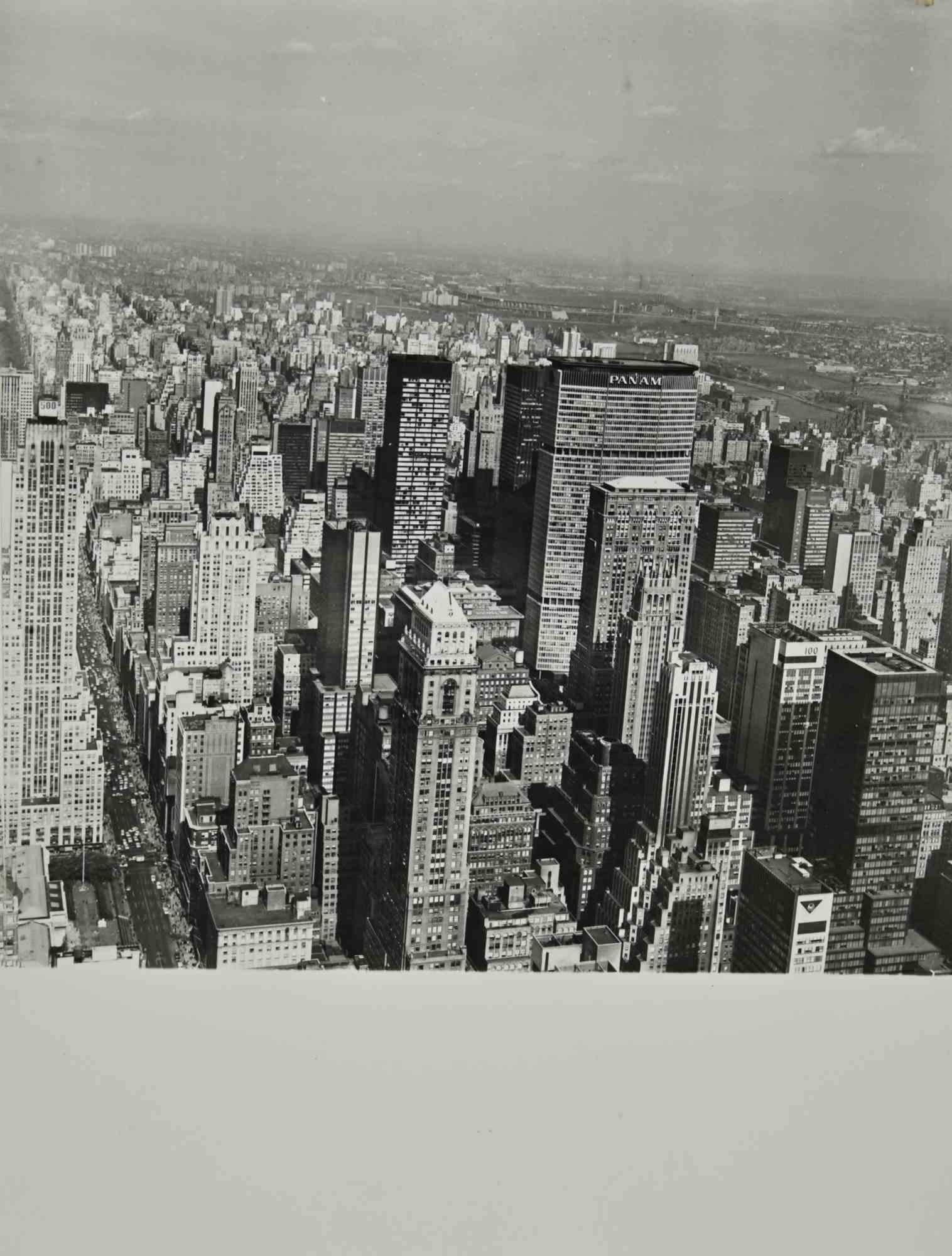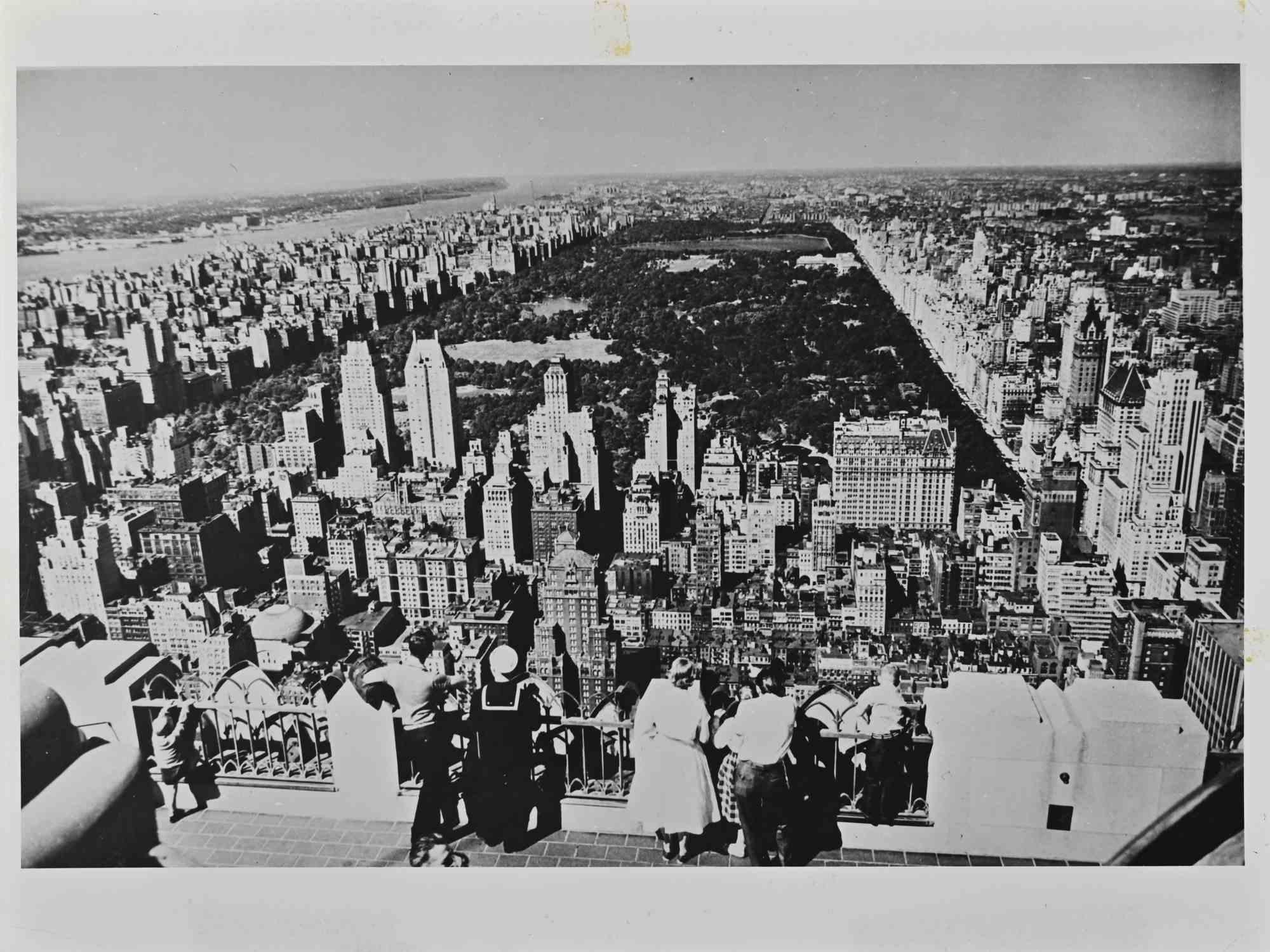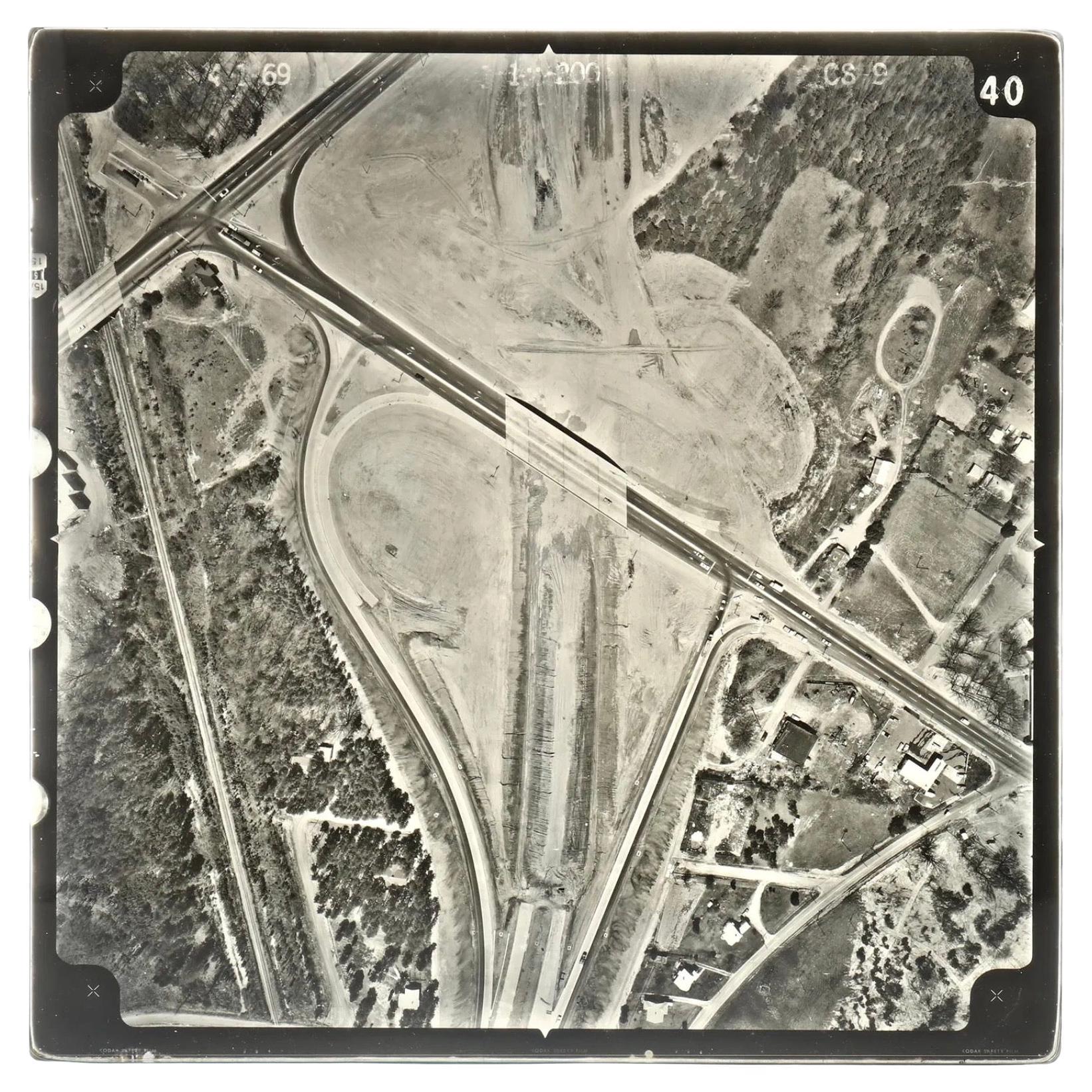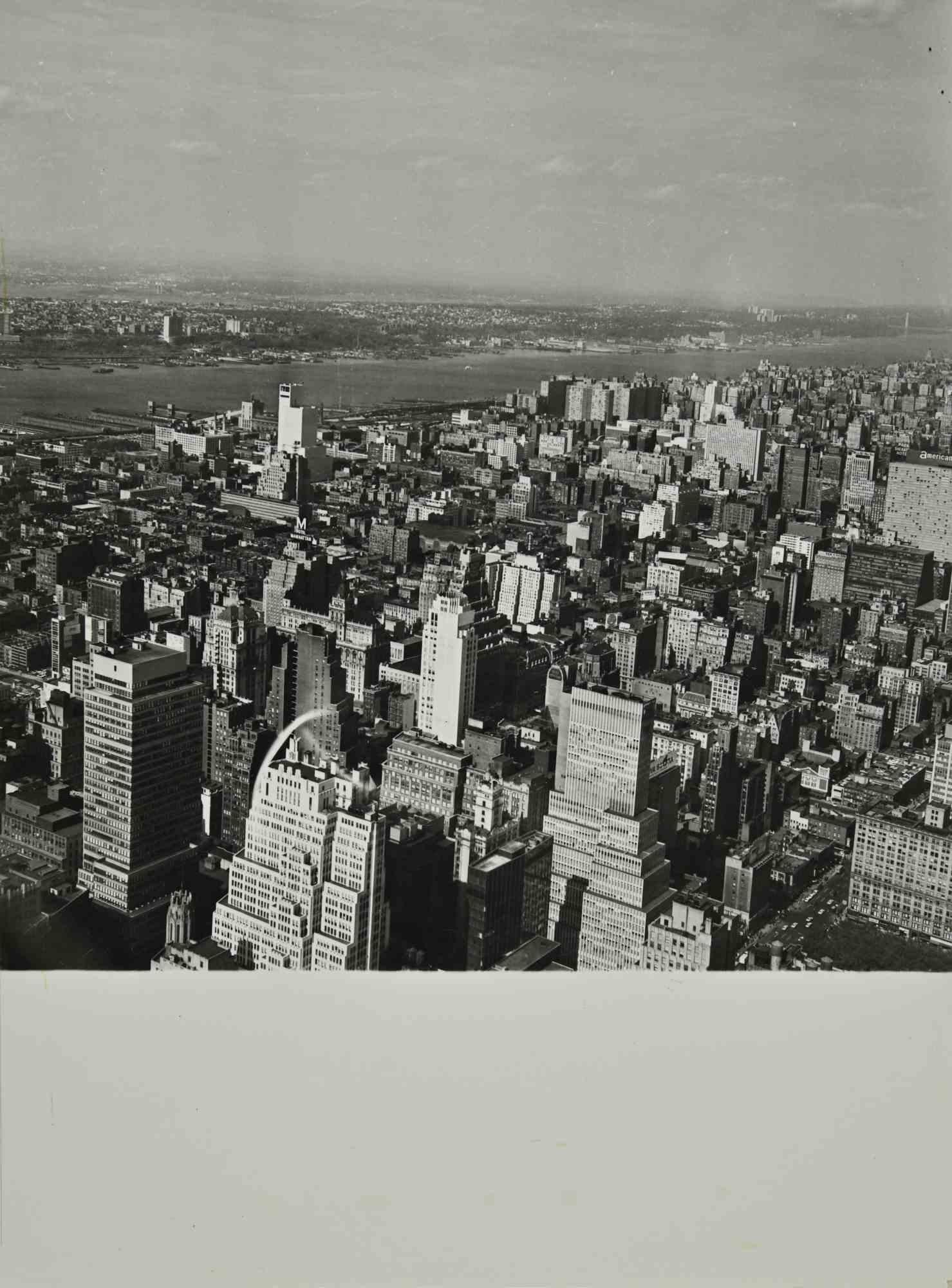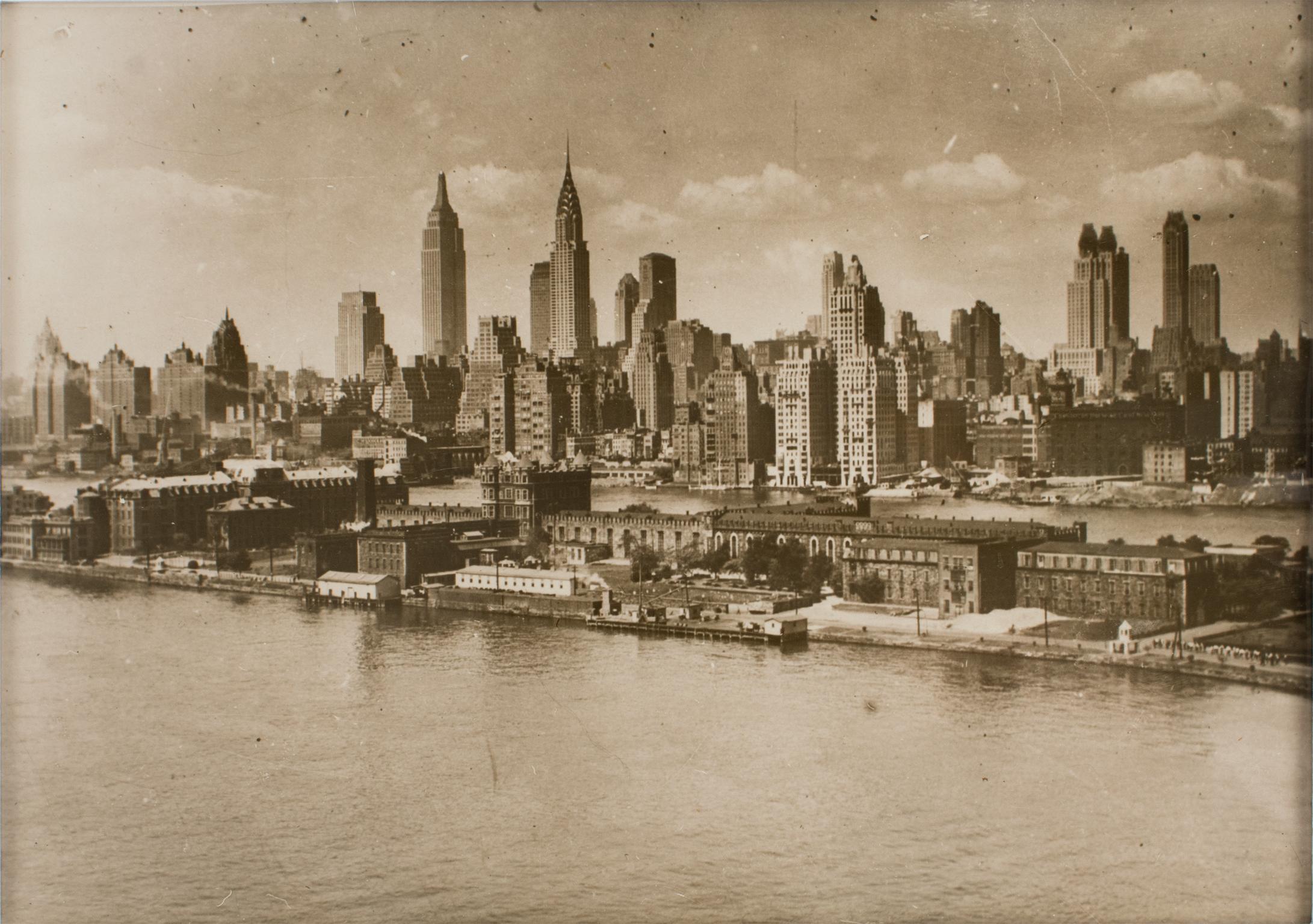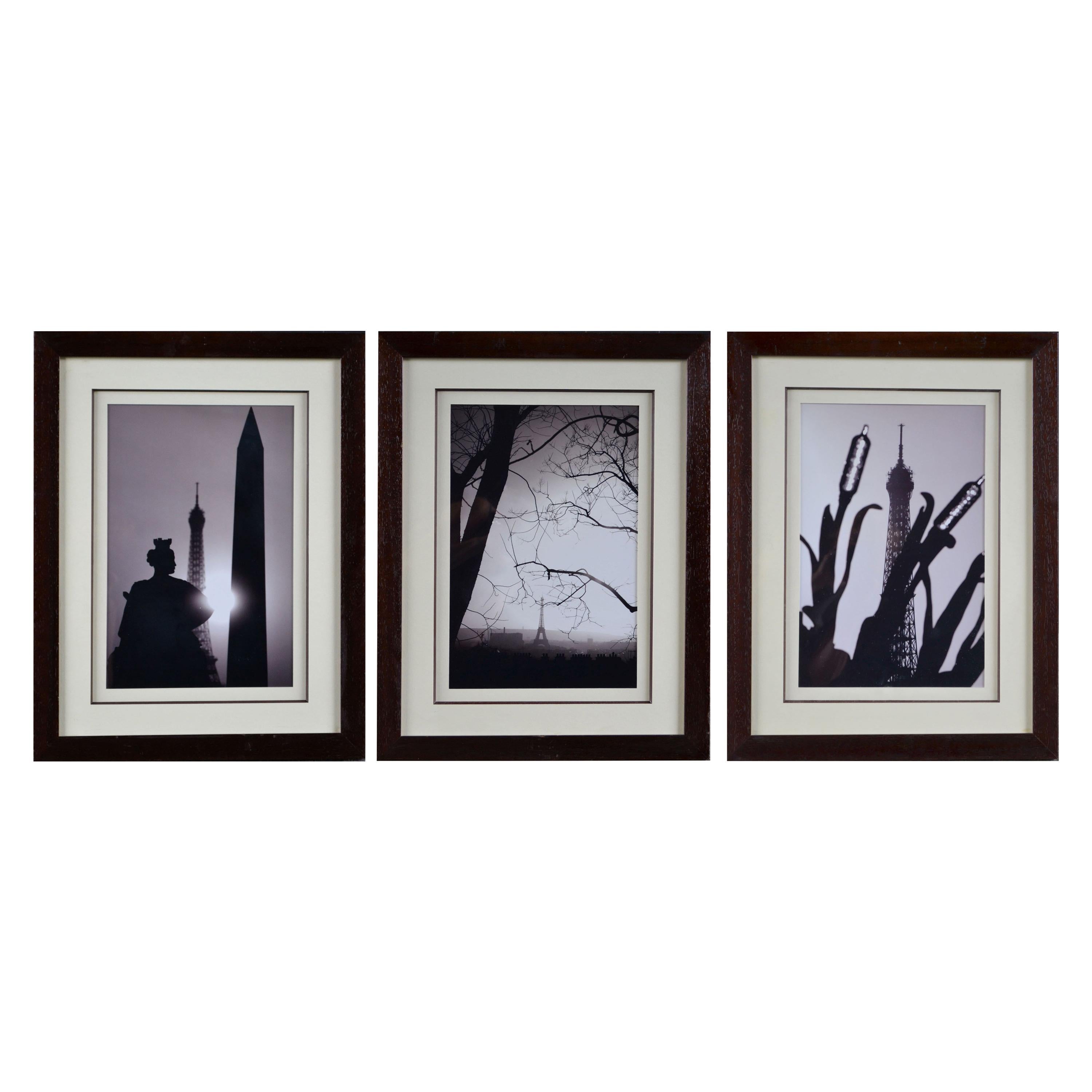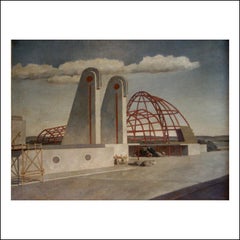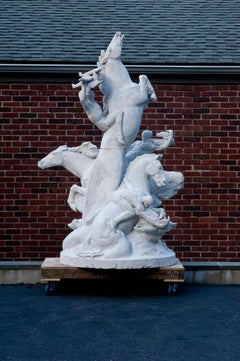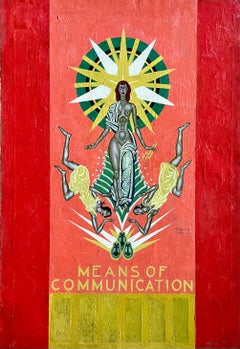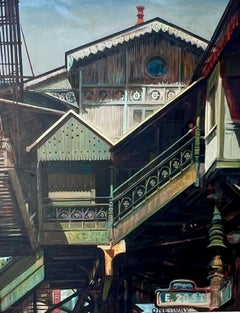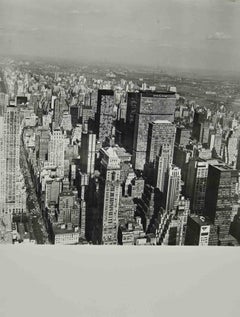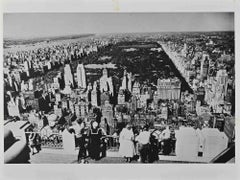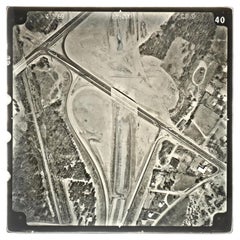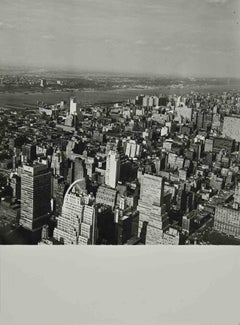Items Similar to NYC 1939 World's Fair 5 - 8 x 10 photographs Mid 20th Century WPA Architectural
Want more images or videos?
Request additional images or videos from the seller
1 of 5
Underwood & UnderwoodNYC 1939 World's Fair 5 - 8 x 10 photographs Mid 20th Century WPA Architectural1939
1939
$950
£714.85
€826.43
CA$1,341.43
A$1,454.50
CHF 771.89
MX$17,914.02
NOK 9,567.04
SEK 9,029.09
DKK 6,168.65
About the Item
NYC 1939 World's Fair 5 - 8 x 10 photographs Mid 20th Century WPA Architectural
Underwood and Underwood
1939 World’s Fair Photographs
8 x 10 inches each
All five prints are stamped on the lower right. Four of the five are stamped “Underwood and Underwood” verso
The painting is part of a 1,000 piece collection of art and objects from the 1939 World’s Fair. The collection as a whole is available.
BIO
Underwood & Underwood were the official photographers for the 1939 World's Fair.
Underwood & Underwood was established in 1882 by Elmer and Ben Underwood in Ottawa, Kansas. The company originally focused on distributing Eastern photographers' stereographs in the West through a network of door-to-door salesmen. In 1887 the headquarters of the company were moved to New York, though manufacturing continued to take place in Ottawa with the building of a plant in 1891 to manufacture stereographic cameras, stereoviews and stereoscopes. By 1901 Underwood & Underwood was a leader in stereographic image production and distribution. In 1920 the company divested itself of its stereograph productions, selling their stock and rights to the Keystone View Company. Underwood & Underwood ceased operations in the 1940s.
- Creator:Underwood & Underwood (American)
- Creation Year:1939
- Dimensions:Height: 8 in (20.32 cm)Width: 10 in (25.4 cm)
- Medium:
- Movement & Style:
- Period:
- Condition:
- Gallery Location:New York, NY
- Reference Number:1stDibs: LU1156213041022
About the Seller
5.0
Gold Seller
Premium sellers maintaining a 4.3+ rating and 24-hour response times
Established in 2008
1stDibs seller since 2019
195 sales on 1stDibs
Typical response time: <1 hour
- ShippingRetrieving quote...Shipping from: Pawling, NY
- Return Policy
Authenticity Guarantee
In the unlikely event there’s an issue with an item’s authenticity, contact us within 1 year for a full refund. DetailsMoney-Back Guarantee
If your item is not as described, is damaged in transit, or does not arrive, contact us within 7 days for a full refund. Details24-Hour Cancellation
You have a 24-hour grace period in which to reconsider your purchase, with no questions asked.Vetted Professional Sellers
Our world-class sellers must adhere to strict standards for service and quality, maintaining the integrity of our listings.Price-Match Guarantee
If you find that a seller listed the same item for a lower price elsewhere, we’ll match it.Trusted Global Delivery
Our best-in-class carrier network provides specialized shipping options worldwide, including custom delivery.More From This Seller
View All1939 World’s Fair NYC, 1000 piece Museum Quality Collection of Art & Objects
By Harry Lane
Located in New York, NY
1,000 piece Museum Quality Collection of Art & Objects from NYC 1939 Worlds Fair
Harry Lane (1891-1973) "1939 World’s Fair Construction," 30 x 40 inches, Oil on canvas, signed lower...
Category
1930s American Modern Landscape Paintings
Materials
Canvas, Oil, Plaster, Photographic Paper
1, 000 piece Museum Quality Collection of Art & Objects from NYC 1939 Worlds Fair
By Chester Beach
Located in New York, NY
1,000 piece Museum Quality Collection of Art & Objects from NYC 1939 Worlds Fair is available for sale.
This sculpture, "Riders of the Elements," is the original 7' plaster maquette from the NYC 1939 World's Fair by Chester Beach...
Category
1930s Art Deco Figurative Sculptures
Materials
Plaster, Canvas, Oil, Photographic Paper
NYC 1939 World's Fair Mural Study American Scene WPA Modern Mid 20th Century
Located in New York, NY
NYC 1939 World's Fair Mural Study American Scene WPA Modern Mid 20th Century
Eugene Savage (1883 – 1978)
1939 World’s Fair Mural Study
45 x 30 inches
Oil on Canvas
Signed lower right
The painting is part of a 1,000 piece collection of art and objects from the 1939 World’s Fair. The collection as a whole is available.
Savage created the mural for the facade of the Communications Building. An image of the completed mural, along with a published postcard, is part of the listing. Note the center top female figure, she resembles the figure in the offered painting.
BIO
Eugene Francis Savage was born in Covington, Indiana 1883. He underwent various forms of art training in the early years. He was a pupil of The Corcoran Gallery and The Art Institute of Chicago, and was later awarded a fellowship to study in Rome at The American Academy.
While under the spell of that ancient city the young artist began to render historic figures that were suitable for the classic style needed for mural painting in the traditional manor. During this period he was able to study and observe Roman and Greek sculpture, although much of the academic training was accomplished by using plaster casts along with the incorporation of live models. This method survived and was used efficiently throughout Europe and the United States.
After leaving the Academy, Savage was commissioned to paint numerous murals throughout the United States and Europe. This artist received acclaim for the works he produced while under commissions from various sources. This young master was a contemporary of Mexican muralists David Alfaro Siqueiros (1896-1974), Jose Clemente Orozco (1883-1949) and Diego Rivera (1886-1957). In this period he was to show the influence of his contemporaries in formulating a modern style. Savage also played a vital role in the WPA Federal Art program, and he was a member of The Mural Art Guild..
Savage was elected an associate member of The National Academy of Design in 1924 and a full member in 1926. From 1947, he held a professorship at Yale University where he taught mural painting, and some of his students went on to significant positions.
By this time the artist had painted large-scale murals at Columbia, Yale University, Buffalo N.Y., Dallas, Texas, Chicago, Indiana, along with other commissioned works. He also achieved recognition for a series of murals commissioned by the Matson Shipping Line and completed around 1940. For this commission, Savage made many exacting studies of customs and folkways of the Hawaiian natives. However, the award-winning murals were not installed as planned but were put in storage during the war years when the ships were used for troop transportation and were in danger of attack.
However the mural images were reproduced and distributed by the shipping company including nine of the mural scenes that were made into lithographed menu covers in 1948. The American Institute of Graphic Arts awarded certificates of excellence for their graphic production, and the Smithsonian Institute exhibited the works in 1949. Today Savages' Hawaiian Art production is held in high regard by collectors of Hawaiian nostalgia.
In later years the artist focused his attention on a theme that dealt with the customs and tribal traditions of the Seminole Indians of Florida. He produced many variations of this theme throughout his lifetime, and the pictures were usually modest scale easel paintings, precise and carefully delineated. Many of these pictures incorporate Surrealistic elements and show some minor stylistic influences of the painters Kay Sage...
Category
1930s American Modern Figurative Paintings
Materials
Canvas, Oil
"Time Remembered" Mid 20th Century NYC Modern American Scene WPA El Railway 1940
Located in New York, NY
"Time Remembered" Mid 20th Century NYC Modern American Scene WPA El Railway 1940
A view of the Third Avenue El (elevated railway) at 28th Street, New York. Signed lower left. Titled verso. c. 1940. oil on board c. 1940, 27.875 h × 21.75 w inches.
BIO
Staats Cotsworth...
Category
1940s American Realist Landscape Paintings
Materials
Oil, Board
Abstract Cityscape Mid 20th Century Modern Cubist Work on Paper Drawing Ariel
By Clarence Holbrook Carter
Located in New York, NY
Abstract Cityscape Mid 20th Century Modern Cubist Work on Paper Drawing Ariel
11 x 4 1/2 inches. Framed by Heydenryk.
Provenance: Gary Snyder Fine Art
B...
Category
1950s Abstract Abstract Drawings and Watercolors
Materials
Paper, Gouache
NYC Cityscape American Scene WPA Modern Realism Mid 20th Century Architectural
By Ernest Fiene
Located in New York, NY
NYC Cityscape American Scene WPA Modern Realism Mid 20th Century Architectural
Ernest Fiene (1894-1965)
Cityscape
36 x 30 inches
Oil on canvas
Signed and dated 1930. lower right
Provenance
Estate of the artist.
ACA Galleries, New York
Exhibited
New York, Frank Rehn Gallery, Changing Old New York, 1931.
New York, ACA Galleries, Ernest Fiene: Art of the City, 1925-1955, May 2-23, 1981, n.p., no. 5.
BIO
Ernest Fiene was born in Elberfeld, Germany in 1894. As a teenager, Fiene immigrated to the United States in 1912. He studied art at the National Academy of Design in New York City from 1914 to 1918, taking day classes with Thomas Maynard and evening classes with Leon Kroll. Fiene continued his studies at the Beaux-Arts Institute of Design in New York from 1916 to 1918, adding classes in printmaking at the Art Students League in 1923.
Fiene began his career as an artist in 1919 with his first exhibition of watercolors at the MacDowell Club arranged by his mentor Robert Henri. In 1923 the Whitney Studio Club mounted a large exhibition of his works. The following year he had an exhibition at the New Gallery in New York, which completely sold out all fifty-two works, including paintings, watercolors, drawings, and etchings. With the proceeds of sales from the New Gallery exhibition, Ernest Fiene and his younger brother Paul, a sculptor, built studios in Woodstock, New York in 1925.
In the early Twenties Ernest Fiene painted mostly landscapes of Woodstock and both the Ramapo and Hudson River Valleys. The first monograph from the Younger Artists Series was published on Fiene in 1922. Published in Woodstock, the series went on to include Alexander Brook, Peggy Bacon, and Yasuo Kuniyoshi. The book reproduced 1 illustration in color and another 27 reproductions in black and white. Around 1925 Fiene became fascinated with the intensity, excitement, and opportunities for color harmonies New York City offered as a subject. His paintings shifted to urban and industrial themes with architecture, industry, and transportation becoming his subjects.
By 1926 Fiene had attracted the dealer Frank K.M. Rehn, who gave him a one-man exhibition that year, which travelled to the Boston Arts Club. C.W. Kraushaar Galleries gave Fiene a one-man exhibition of urban, landscape, portrait, and still life paintings in 1927. Julianna Force, the director of the Whitney Studio Club and first director of the Whitney Museum of American Art, included two of Fiene’s paintings in a fall exhibition in 1928. The Whitney Studio Club showed Fiene’s paintings in a two-man exhibition with Glenn O. Coleman that year and acquired three of Fiene’s paintings. Also in 1928 Fiene became affiliated with Edith Halpert’s Downtown Gallery where he had an exhibition of 20 lithographs in the spring. Fiene sold his house in Woodstock in 1928 to spend more of his time in New York City.
With so many successful exhibitions, Fiene returned to Paris in 1928-29 where he rented Jules Pascin's studio and studied at the Académie de la Grande Chaumière. In France, Fiene painted both landscape and urban subjects developed from ideas influenced by Cubist geometry and the use of flat areas of broad color. Upon returning to New York in 1930, Fiene used this new approach to continue to paint New York skyscraper and waterfront subjects, as well as to begin a series of paintings on changing old New York based on the excavations for Radio City Music Hall and the construction of the Empire State Building. Frank K.M. Rehn Galleries exhibited this series, titled “Changing Old New York,” in 1931. Fiene also has solo exhibitions at Rehn Galleries in 1930 and 1932. Fiene’s oil paintings are exhibited at the Chicago Arts Club in 1930 as well.
Fiene was included in the Museum of Modern Art’s exhibition Painting and Sculpture by Living Americans in December of 1931. Visiting New York, Henri Matisse saw the exhibition and called Fiene’s Razing Buildings, West 49th Street the finest painting he had seen in New York. Fiene had two mural studies from his Mechanical Progress series exhibited at the Museum of Modern Art’s exhibition Murals by American Painters and Photographers in 1932. Fiene sent View from my Window which depicts Fiene working on a lithograph stone while looking out his window to the newly completed Empire State Building to the Carnegie International in 1931. In 1932 Fiene participated in the first Biennial of American Painting at the Whitney Museum and his prints were included in exhibitions at the Downtown Gallery and the Wehye Gallery. In the same year, Fiene was awarded a Guggenheim fellowship to further study mural painting in Florence, Italy.
On his return from Italy in 1933 Fiene re-engaged himself in New York City life and won several public and private mural projects. Fiene resumed his active exhibition schedule, participating in two group exhibitions at the Whitney Museum and a one-man exhibition of recent paintings at the Downtown Gallery in January 1934. In 1933 he purchased a farm in Southbury, Connecticut, which added Connecticut scenes to his landscape subjects. This was also the year Fiene began to spend summers on Monhegan Island, Maine, where he painted seascapes, harbor scenes, and still lifes.
Fiene’s landscape paintings attracted numerous commissions as part of the American Scene movement. Through the fall and winter of 1935-36, Fiene took an extended sketching trip through the urban, industrial, and farming areas of Pennsylvania and West Virginia. Most of the twenty-four Pennsylvania urban and rural paintings...
Category
1930s American Modern Landscape Paintings
Materials
Canvas, Oil
You May Also Like
Vintage Skiline View of New York - Photo - Mid 20th Century
Located in Roma, IT
Skiline view of New York is a black and white vintage photo, realized in mid 20th Century.
Good conditions and aged.
It belongs to a historical and nostalgic album including histor...
Category
Mid-20th Century Modern Figurative Photography
Materials
Photographic Paper
The Panorama of New York City - Vintage Photo - Mid 20th Century
Located in Roma, IT
The panorama of New York City is a black and white vintage photo, realized in Mid 20th Century.
Good conditions and aged.
It belongs to a historical and nostalgic album including ...
Category
Mid-20th Century Contemporary Figurative Photography
Materials
Photographic Paper
Group of Vintage NC State Highway Commission Glass Plate Negatives (Set of 39)
Located in New York, NY
Group of Vintage 1960s NC State Highway Commission Glass Plate Negatives (Set of 39)
A rare and historically significant collection of 39 aerial glass plate negatives from the 1960s...
Category
Mid-20th Century American Modern Photography
Materials
Glass
Vintage Skiline View of New York - Photo - Mid 20th Century
Located in Roma, IT
Skiline view of New York is a black and white vintage photo, realized in mid 20th Century.
Good conditions and aged.
It belongs to a historical and nostalgic album including histo...
Category
Mid-20th Century Modern Figurative Photography
Materials
Photographic Paper
New York City Skyscrapers, July 1931, Silver Gelatin B and W Photography Framed
By Press Agency Keystone View Company
Located in Atlanta, GA
An original silver gelatin black and white photograph by Press Agency Keystone View Company. New York City skyscrapers, July 7th, 1931.
Features:
Original Silver Gelatin Print Photog...
Category
1930s Modern Black and White Photography
Materials
Silver Gelatin
Photographs of Paris by Antonio Brigandí 1970s with Eiffel Tower
Located in London, GB
Three sepia photographs of Paris Eiffel Tower by Antonio Brigandí in original frames by Italian, architect by training, Antonio Brigandi, 1970's cap...
Category
Vintage 1970s Italian Mid-Century Modern Photography
Materials
Glass, Wood, Paper
More Ways To Browse
New York Worlds Fair 1939
Vintage 1939 New York Worlds Fair
Vintage Worlds Fair
1939 Fair
1939 World Fair
Wpa Print
Mid Century Architectural Print
Vintage 10X10 Frame
Midcentury Modern Architecture Print
Framed Wpa Prints
Wpa Photographs
Navajo Photographs
Stephen Mallon Weeks
Twin Towers In Art
Vitali Diptych
Brazil Favela
Lifeguard Stations
Marfa Prada Photography
